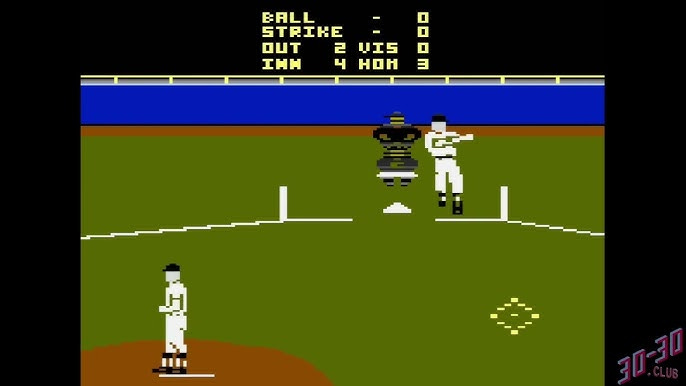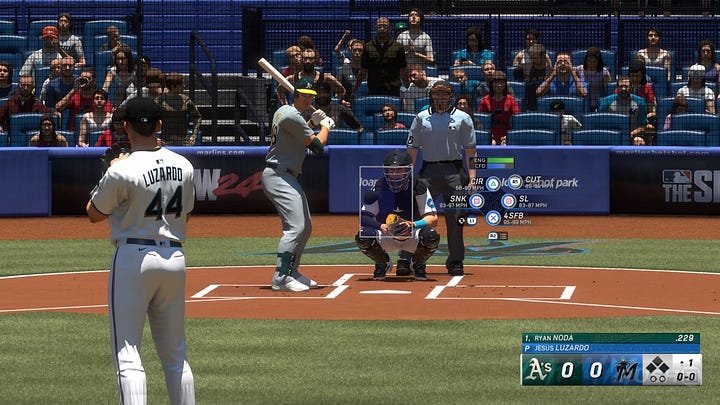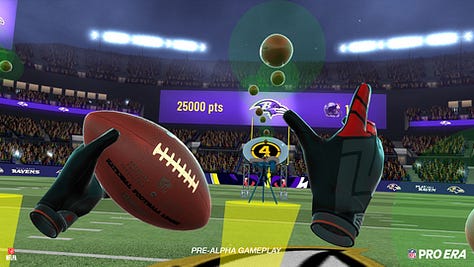What’s The Next Great Sports Video Game?
As AAA sports titles stagnate, I believe the future of sports gaming lies in three areas.
Every September, like clockwork, I buy the new NBA 2K game and think: “I just wasted 70 bucks – because this is the same game as last year.”
Sure, I get updated rosters. But seeing the same graphics and gameplay frustrates me every year.
This year, I felt especially frustrated. I had spent the previous few weeks researching the sports video game landscape and speaking with stakeholders including:
Strategic & creative execs at the major sports game publishers
Gaming partnership leads at the Big 4 sports leagues
VC investors focused on the games industry
Founders of new sports game startups
These conversations made me realize: NBA 2K and other AAA sports games aren’t getting much better anytime soon.
In the late 1980s, the first licensed sports video games emerged. Over the next 30 years, booms in console and game development enabled hyper-realistic sports games. And franchises like NBA 2K, Madden and 2K got drastically better.
Pete Rose Baseball on the Atari 2600 was the first licensed sports title in 1988. Compare it to MLB The Show on the PS5 in 2024.


Better games have fueled a massive business. Electronic Arts and Take-Two – the two largest sports game publishers – drove over $13 billion in revenue in 2023. That’s more than every American sports league besides the NFL, and every American AAA publisher besides Sony and Microsoft.
However, over the last decade, these AAA sports games stopped getting much better. Graphics, animations and game modes all largely plateaued. And even though fans continue to buy the game, they aren’t thrilled.
Sports game Metacritic user scores look like this year-over-year: EA FC 24 (75% negative), NBA 2K24 (76% negative), Madden 24 (85% negative).
Sports game IGN reviews sound like this year-over-year: “It might have a new name, but EA Sports FC 24 is just about the same, frustrating but beautiful game.”
I believe this problem will only get worse. AAA sports game improvements will continue to slow, and revenue will follow soon.
There are three reasons, in my opinion.
Reason #1: AAA sports games are a saturated TAM
Sports titles have come to dominate today’s console gaming market. Check out 2023’s top-selling games. On PlayStation and Xbox, 5 and 6 of the top 20 were sports titles.
The problem is: That doesn’t leave much room for growth.
Of the roughly 65 million next-gen Sony and Xbox console owners, nearly every gamer interested in hyper-realistic sports games is already playing these games.
As a result, disc sales for most major sports franchises flatlined over the last five years. See here NBA 2K as an example.
Reason #2: The game publishers aren’t positioned to improve AAA sports games
In theory, Take-Two and EA could grow the sports gaming TAM by improving the games. They could invest in R&D to make the core games more realistic and enjoyable for core sports gamers. They could also develop additional game modes to appeal to a larger audience.
However, the publishers face multiple constraints:
Financially, EA and Take-Two are $38 billion and $27 billion public companies. Shareholders wouldn’t be pleased with rising R&D costs.
Operationally, the publishers have just months to improve each sports title before shipping annually. In comparison, many AAA titles like Grand Theft Auto can take a decade to develop.
Competitively, the sports publishers face little pressure. Exclusive league licenses give EA and 2K near-monopolies in each sport they cover.
Although publishers aren’t incentivized to significantly improve the games, they do want to grow revenue. So EA and 2K have pushed in-app purchases. For example, NBA 2K MyTeam and EA FC Ultimate Team sell player packs, cosmetics and special events on top of the disc price.
These in-game purchases have already started to anger fans. GameSpot’s NBA 2K25 review, titled “Luxury Taxed,” said: “NBA 2K once again sits in the top tier of sports games… but a pay-to-win scheme continues to infect some of its best aspects.”
Because they’re reliant on disc revenues, publishers cannot shift their sports titles to a fully free-to-play model. So increasing in-app purchases for the same game modes will only continue to anger gamers.
There’s also an inherent tension between in-app purchases and AAA sports games. In-app purchases often make games pay-to-play. For example, you often need to pay to make your 2K avatar or Ultimate Team better. But people love sports games precisely because they’re skill-based – aka the better you are, the better you’ll play.
In sum, in-app purchases are not a long-term growth plan for the publishers. But leagues don’t have the answer for their AAA games either.
Reason #3: The sports leagues aren’t positioned to improve AAA sports games
In theory, the leagues could also take steps to improve their AAA games. For example, the NBA could integrate non-gaming channels to make NBA2K a more holistic and entertaining fan experience. They could integrate media; imagine if you could watch live games in MyPark like a Fortnite concert. They could integrate merchandise; imagine if every piece of Fanatics merch you bought was also virtually delivered to your MyPlayer avatar.
However, the leagues face multiple constraints:
Operationally, it’s extremely difficult for the leagues to coordinate across their TV, gaming, merchandise and marketing partners, who are all also slow-moving corporations.
Financially, the leagues are not incentivized to invest much in their gaming business. Compared to their new media deals, gaming deals are a drop in the bucket. The NBA earns roughly $150M annually from 2K, but over $6.9B annually from Disney, Comcast and Amazon.
Granted, the leagues are not sitting on their hands. They’re actively experimenting with new gaming platforms. This year, The Premier League partnered with Sorare on an NFT fantasy game, the NFL partnered with Roblox on a virtual concert, and NASCAR partnered with Fortnite on a project to be announced.
Despite this appetite for innovation, the leagues are not positioned to innovate on their AAA games or grow sales long-term. And neither are the publishers.
So as AAA sports games stagnate, what’s the next phase of growth for sports games?
I’m paying attention to three categories.
1. Casual Mobile Games
Mobile games drive nearly 50% of gaming industry revenues – almost double console games.
But sports IP holders have critically under-monetized mobile.
To date, leagues have prioritized AAA simulation games translated into mobile form. For example, Madden NFL Mobile, NBA 2K Mobile and EA FC Mobile. Leagues like these games because they’re de-risked. The large publishers can pay high upfront fees to license their IP. And there will be a core audience who always plays them.
However, the most popular and highest-grossing mobile titles are casual games, not simulation games. Some massive outcomes include Candy Crush Saga ($12B lifetime revenue), PUBG Mobile ($11B), and Clash of Clans ($10B).
But in recent years, it’s become harder to make a hit mobile game. Marketing and user acquisition costs increased. Fewer studios have the appetite to pay a league IP license. So the leagues are now actively reevaluating their gaming licensing structures.
I’ll mention two challenges unique to sports-based mobile games:
IP is much less valuable for casual mobile games than AAA games. September’s highest-grossing mobile sports game was Golf Clash - Golfing Simulator, a casual game that leverages no PGA Tour IP. Mobile gamers are less enticed by IP than great game mechanics and loops.
The developers making casual mobile games often don’t like sports games. In fact, sports titles like NBA 2K are looked down upon by the rest of the gaming industry. Therefore, it’s hard to find development teams who understand how to create great mobile games and are simultaneously interested in making sports games.
That said, there continues to be white space for new studios to innovate on sports game mechanics, leverage sports IP in different ways, and create one or multiple great casual mobile sports games.
2. AR/VR Experiences
While mobile is the immediate opportunity, AR/VR is further out.
Today, there are three main categories of AR/VR sports experiences:
Fitness experiences like FitXR and Supernatural gamify exercise.
Simulation games like NFL PRO ERA and Eleven Table Tennis let you play sports in VR.
Live-viewing platforms like Xtadium broadcast games in XR, with gamified elements layered on top.



All three categories are currently constrained by the hardware’s limitations. Apple Vision Pro and Meta Quest retention numbers make clear: The headsets’ weight and graphics are not ready for a mainstream consumer product.
But Apple, Meta, and other Big Tech giants continue to invest billions in the hardware. And it continues to improve. Last week, Meta’s Orion prototype reveal blew people away.
If (or when, according to Mark Zuckerberg) XR headsets become a mainstream computing platform, there will be sports use cases. But in the meantime, venture investors face the tough question of when to invest in AR/VR studios – because being too early is the equivalent of being wrong.
I will be paying close attention to AR/VR hardware advancement, as well as traction across the three use cases mentioned above: fitness, simulation and live-viewing experiences.
3. PC & Multiplatform Games
Mobile and AR/VR games could be great businesses, but they’ll look different from AAA games.
A PC & multiplatform game is most likely to look like the next NBA2K or Madden – and be the next great hyper-realistic game.
Today, it would be near-impossible to build a hyper-realistic game better than EA or Take-Two. These publishers have long-term moats, including proprietary game engines, access to the best game developers, and exclusive licenses with IP holders.
Konami Pro Evolution Soccer’s struggle to compete with EA’s FIFA for years is a prime case study of how hard it is to make a phenomenal hyper-realistic game. It could take well over $100 million and 10 years just to build an EA FC lookalike.
But PC games could scale to EA FC’s quality incrementally over time. Here’s how:
A new studio raises initial capital to develop a sports game and sells it on a PC store like Steam. The game innovates on gameplay and business models, likely leaning into free-to-play.
The first game builds a sizable and loyal audience. The studio uses this success to raise more capital, build an even better game, and expand distribution to consoles and mobile.
The game continues to grow in quality and audience until it can compete for major sports league licenses alongside Take-Two and EA.
Early case studies still in development include Refactor Games, a Los Angeles-based studio building a football simulation game. Another example is GOALS, a Swedish studio building a cross-platform soccer simulation game.
##
As an investor, a gamer and a sports fan, I’m excited for this next wave of innovation across mobile, AR/VR and PC sports games.
If you’re building or investing at the intersection of sports and games, I’d love to meet you. Please reach out!





